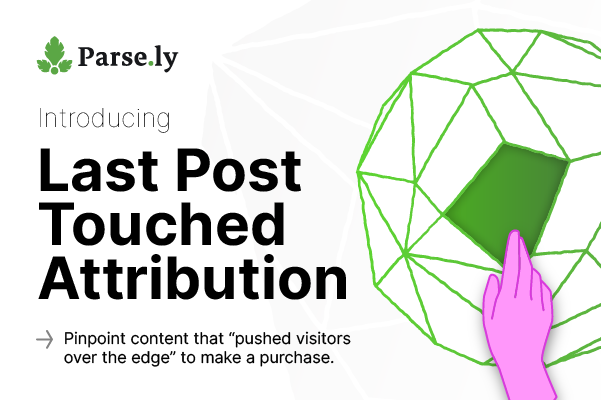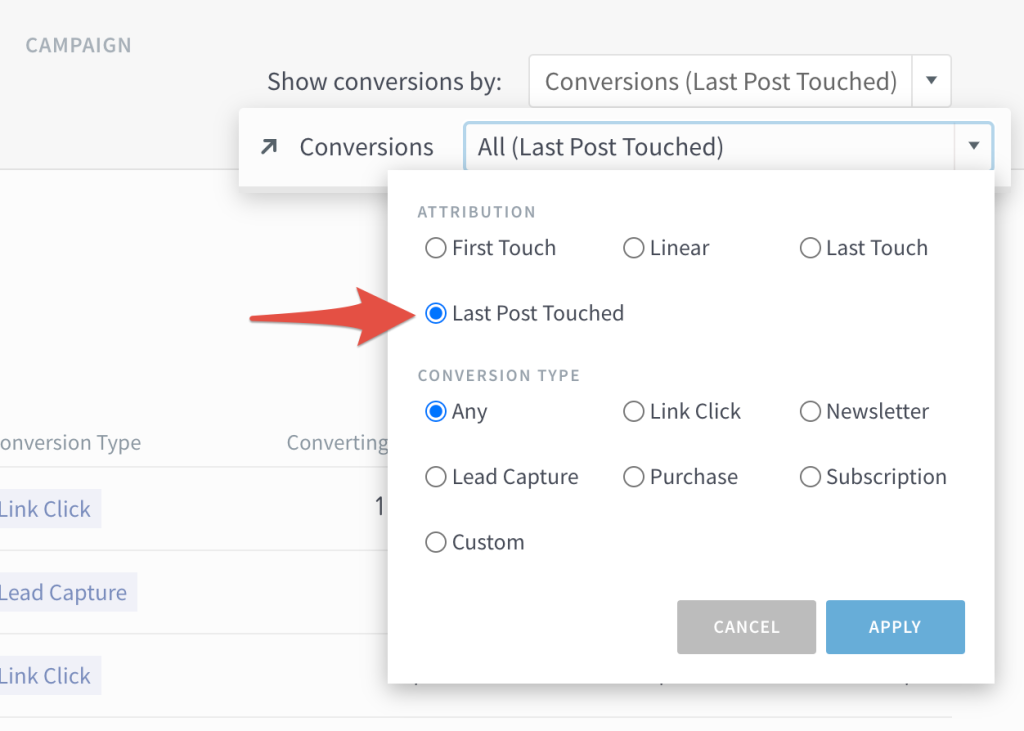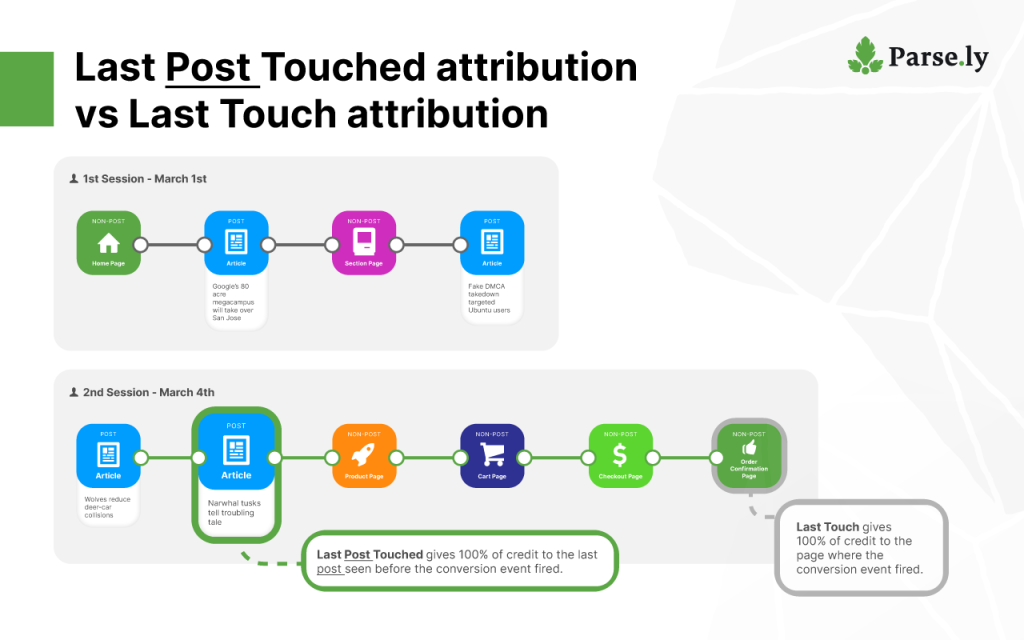What Content Pushes People to Purchase? Find Out With Last Post Touched Attribution

When we launched Content Conversions, our customers quickly surfaced that we had a gap in our attribution models. Parse.ly could give credit to the first page seen, the last page seen, and all the pages in between.
The thing is, for content teams, for folks writing articles and blog posts, the page where the conversion happened (measured with Last Touch attribution), isn’t relevant. It’s usually some sort of transactional page, like an order confirmation buyers hit after completing checkout.
What would be more useful, customers told us, is the ability to pinpoint the specific post that “pushed someone over the edge” to purchase or subscribe.
And so we built the Last Post Touched attribution model specifically to address that issue. If your Parse.ly subscription includes Content Conversions, you should see Last Post Touched as an option in the Conversions metric dropdown in your dashboard, starting today:

Get a clear picture of what content leads to purchases
Without Last Post Touched attribution, it was tricky for the team at Slate—a daily online magazine and podcast network—to use Parse.ly to understand what posts led readers to sign up for their membership program, Slate Plus.
Before, when the Slate team looked at a Last Touch attribution model of Slate Plus Purchases, the “Subscribe to Slate Plus” landing page got most of the conversions. This is unsurprising—that’s where purchases happen, after all.

Traffic and conversions data have been obscured at Slate’s request.
The Slate team knew that convincing someone to buy a Slate Plus membership can happen over multiple visits, so they really needed to see what type of content pushes visitors to take that plunge as part of their overall strategy. Last Post Touched shows them just that.

Traffic and conversions data have been obscured at Slate’s request.
Now, Slate’s Senior Product Manager Heidi Strom Moon tells us:
“With Parse.ly’s Last Post Touched conversion attribution, we get a clearer picture of what content leads to Slate Plus signups. And it gives us important reader revenue information in the same tool editorial leaders use every day to monitor and analyze traffic, drawing a more direct connection between attracting readers and converting them to subscribers.”
The difference between Last Post Touched and Last Touch attribution
Let’s follow the journey of one person as they visit a news site over two sessions, interacting with multiple posts and non-posts along the way.

In their first session, the visitor looked at the homepage, the section page, and two articles. In their second session, they read two articles. On the second article, they decided to subscribe and then completed the subscription checkout process and hit an order confirmation page. This is the page a “subscription” conversion event fired upon.
Using Last Touch attribution, 100% of the credit would go to the order confirmation page. Looking at Last Touch attribution for scenarios for this can feel non-revelatory—of course the subscription happened on the confirmation page; we already know that.
Instead, if Last Post Touched attribution is applied, the last post seen, an article about narwhal tusks, will get 100% of the credit. This shows us what article tipped someone over the edge to take action, instead of the page where the conversion happened.
Here’s another example that’s more relevant for content marketers, where someone is visiting and then purchasing from the site of a calendar synchronization software company.

How to get your metadata set up to work with Last Post Touched attribution
You may need to update the metadata you send to Parse.ly to make full use of Last Post Touched attribution.
Parse.ly recognizes two page types, posts and non-posts. For Last Post Touched attribution to work:
- Transactional pages—like cart, checkout pages, and order confirmation pages—must be classified as non-posts.
- Meaningful content pages—like blog posts or articles—must be classified as posts.
Learn how to update your metadata in this help doc.
Everyone should understand how their work impacts the bottom line
With Last Post Touched attribution, writers and creators can see what content led someone to actually convert, not just their intent to convert. They can say “I was responsible for this many conversions.” And that means everyone is on the same page, equipped with the knowledge about what to do to make a difference for the business.